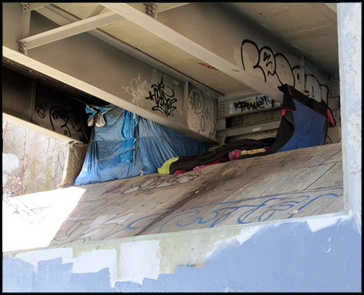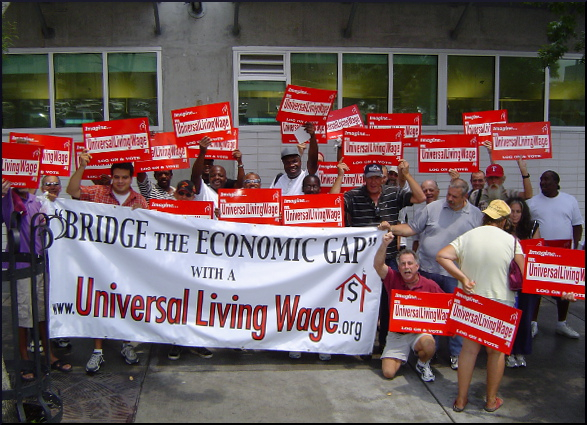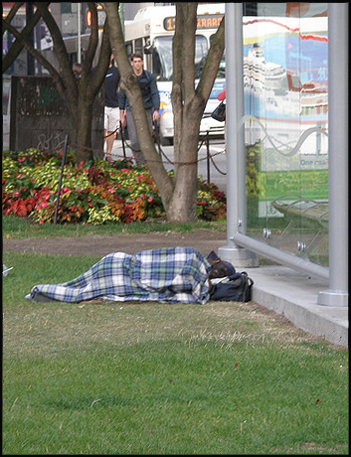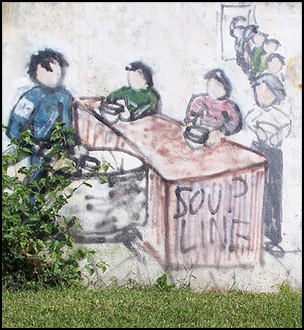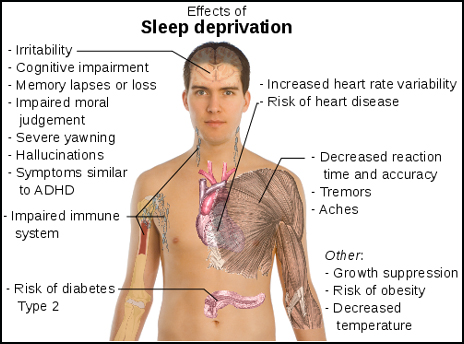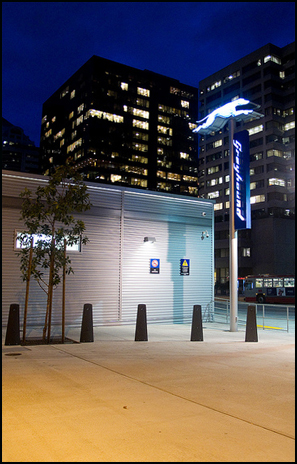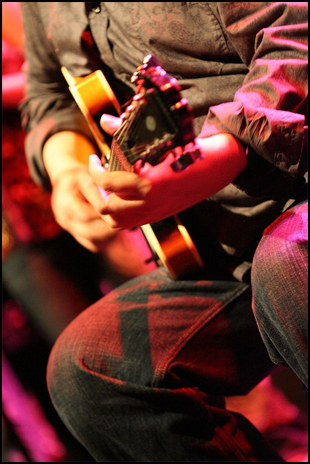
It’s hard to say anything negative about shelters when municipal and state budgets everywhere are being cut. The last thing you want to do is give some bureaucrat the excuse to decide, “Shelters can be awful places, so let’s stop funding them.” And no one wants to denigrate the efforts of the people who found, fund, and administer non-government facilities. Thousands of volunteers have given untold hours to help keep these places of refuge open and stocked with food, blankets, and all the other needed materials.
Still, there are reasons why people experiencing homelessness would rather not sleep in a shelter. One of them being, it might not even be possible to get any sleep. BTW, in case you missed it, the House the Homeless 2011 Health Sleep Survey contains some eye-opening facts about what it’s like to attempt a night’s sleep as a person experiencing homelessness. Even an otherwise healthy person who is not in pain finds it a real challenge. Just imagine how little sleep is available for those with medical problems.
A while back, we reminisced about how cities prepare for the Olympics or a political convention by taking extreme measures to remove street people. In those circumstances, people very much resent being moved around like so much dirt being swept under a rug. Even if offered accommodation in a shelter, sometimes they don’t want to go there. And even in normal times, with no impending major civic event, many street people don’t want to be in a shelter even if space is available and they are eligible. “It may be better than freezing to death, but not by much,” is the feeling in some quarters.
When Australia was preparing for its turn as Olympic host, Mary Beadnell reported on how the first priority of a city council task force was to create a dossier on every person experiencing homelessness, as the initial step in finding a place to warehouse them. But many of the unhoused had no intention of cooperating. Beadnell wrote,
Among homeless people, hostels and boarding houses throughout the Sydney metropolitan area have the reputation of being more dangerous than the streets, because of the increasing frequency of violent assaults, theft and food poisoning that occur there.
In January, the Times of India reported that even though the city contains as many as 150,000 people experiencing homelessness, many would rather not stay in the shelters, which can only accommodate 12,000 anyway. So, why bother mentioning that some think the streets are better? Why is this news? Probably to emphasize the danger. This article says,
Even as Delhi shivers in the bone-chilling winter, the city’s homeless… prefer to sleep in the streets under the open skies rather than use the 150 night shelters, citing lack of safety and facilities.
So there it is again — safety. In many shelters, the inhabitants face danger not only from predatory or violent individuals, but from contagious diseases and insect pests. In Canada, the problems are the same. John Colebourn, reporting on the situation in Vancouver, British Columbia, interviewed a fellow named John Green, who told him that the problem for many is that they are not allowed to bring their possessions into the shelters, and of course anything you leave outside will be stolen. The loss of everything you own, even if it’s not much, is a steep price to pay for a night indoors.
Of course, in a way, this makes ultimate sense, because bundles of belongings can contain life forms that are not wanted inside the shelter. In fact, insect parasites are a major problem in shelters, and are another factor that makes people prefer to take their chances outside. Green himself told the reporter,
Right now I’d rather be homeless than be bitten alive by bed bugs.
Bed bugs have become a huge problem, not only in homeless shelters but in regular houses and apartments, too, and even in vehicles. The bugs like to travel from place to place in clothing, in baggage, and in furniture. They especially like to live in wooden bedframes, which kind of discourages the whole recycling concept. They also hitchhike around on pets and wild animals. One experienced online commentator says the bites hurt so bad, you want to cry.
Inside a building, bedbugs migrate from one area to another via the heating ducts. Once ensconced in their new home, they are very hard to detect, although specially trained dogs can alert to their presence. Once found, they are hard to get rid of. They have developed resistance to DDT.
In Africa, the bed bugs have adapted so well to the stuff, it makes them even livelier and more robust. Any chemical that can wipe out bed bugs is pretty bad for humans. The good news is, they can be quashed by biological control. The bad news is, their natural enemies are things like cockroaches, which you don’t want in the place either.
On the Change.org website, Homeless Nate contributed this to the discussion:
The Berkeley shelter had the most horrendous bedbug problem. I showed to them where the problem was and how they could fix it (by removing the wooden part of the beds). And they were like ‘What do you know? You’re homeless!’
But all this is small potatoes, compared to what goes on in China, where ruthless managers of private shelters have been selling people to factories for years. The mentally disabled start out at an agency with a comforting name like “Disabled Self-Reliance Group” and wind up as slave laborers. An uncredited article from a German news service reported,
State media have reported several other cases of forced labor since the government promised a crackdown after a scandal in 2007 involving the enslavement and maltreatment of more than 1,000 beggars and mentally disabled people at brick kilns in the northern province of Shanxi.
In one of the more interesting alternatives to public shelters, some volunteers open their own homes. In Bradford, West Yorkshire, England, there is a faith-based organization called Hope Housing where housed people sign up to let someone stay, usually only for a night, but sometimes for a week or a month. It was begun to help people over 26, supplementing the efforts of an already-existing volunteer organization, Nightstop, which was created for people under 26. These organizations also offer help in finding more permanent accommodations.
Reactions?
Source: “Sydney’s homeless to be removed for Olympics,” WSWS, 02/03/00
Source: “Delhi’s homeless prefer streets to night shelters,” Times of India, 01/11/11
Source: “Homeless struggle with decision to seek shelter or risk theft, bed bugs,” The Province, 01/05/11
Source: “Why I Choose Streets Over Shelter,” Change.org, 06/03/09
Source: “Shelter manager detained for selling homeless as forced labour,” Monsters and Critics, 12/14/10
Image by brownpau (Paulo Ordoveza), used under its Creative Commons license.

